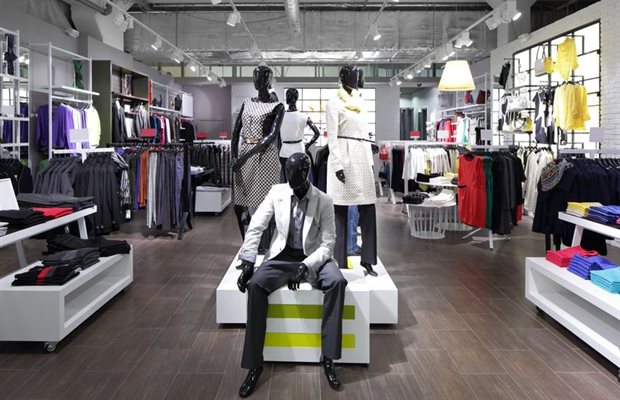
In fact, digital platforms such as Amazon are now looking into an in-store approach. Ecommerce made up only 10.2% of total retail sales worldwide in 2017, signalling the continued consumer appetite for an in-person shopping experience.
Brick and mortar retailers have enormous opportunity to leverage the distinct benefits of traditional, in-person shopping in ways that digital sites can only dream about. This Christmas, the winners will be those who are able to transport the digital world into their stores in order to create convenient and memorable shopping experiences.
So, considering that 98% of retail in SA still happens in-store, according to a PWC report, here are three ways retailers can use physical stores to their advantage in the digital age and help drive festive season sales.
Whilst traditional retail businesses based on brick-and-mortar stores urgently need to update their business models, they also need to start recognising the unique advantages their physical locations offer – and then use technology to enhance them.
After all, unlike shopping online, brick-and-mortar stores can offer the possibility of in-person interactions with retail staff, as well as unique shared experiences that transcend traditional shopping routines.
Take Virgin Holidays, which has opened a new chain of retail concept stores, with the aim to create an immersive environment and allow shoppers to try out various elements of the Virgin Holidays experience. Here, customers can test-run upper-class seats in the mock-up of a Virgin Atlantic cabin, or visit the virtual reality installation, which takes people on a ‘rollercoaster’ of global Christmas holiday destinations.
This idea of ‘reverse showrooming’, when consumers research items/holidays online and then visit a store to try it out and receive expert advice rather than browsing in-store and then going home to buy online, has been mirrored by Mango. The fashion retailer has leveraged technology to offer a similarly personalised service. Many of their fitting rooms now include radio frequency identification technology (RFID), which offers up recommended or co-ordinating items when a customer scans something.
It’s not just about providing an immersive experience, and retailers must also utilise technology to provide shoppers with the most convenient visit possible. With daunting Christmas shopping queues in mind, Zara has launched self-service kiosks abroad, which will no doubt streamline the purchase experience.
The more retailers can play up these three elements, the more they can win back the hearts and minds of consumers, using the opportunity of in-store interaction to their unique advantage.
If retailers invest properly in infrastructure that breaks down internal siloes, they will be able to offer consumers a truly omnichannel shopping experience. Until recently, there was no connection between what a shopper bought or looked at online and their behaviour in-store. But knowing who the customer is, where they are, and their preferences is critical. To do this, retailers are using analytics, location, and context, and seeing rising sales as a result.
The benefits of blending online services with in-store operations are exemplified by the rising popularity of cross-platform Click & Collect options. Consumers want to shop when and where the want, and the advent of Click & Collect has proven itself attractive to customers who desire more flexibility from their delivery options.
This service combines the convenience of internet shopping (easily comparing prices and filtering through what you want), with the in-store ease of collection, all the while driving people into physical stores at the same time. In fact, this service drives impulse buys, with research showing that 24% of European shoppers make unintended purchases while picking up their items in store. As retailers face backlogs of deliveries in the build-up to the festive period, this alternative option can help ensure customer expectations are met.
By aligning back-end operations with front-end customer service and using technology at every step of the supply chain, the retail industry will start to get a single, multi-channel view of its omnichannel customers. This is exactly what it needs to offer the seamless, streamlined experience that consumers now demand.
Tied to the above point, part of developing insight into a customer’s in-store behaviour includes collecting data around stock and inventory. At present, the structure of many retailers fails to live up to the needs of modern customers. Stock is typically siloed, and allocated to different pools that serve the physical shop, e-commerce, pop-ups, and wholesale.
But this kind of approach is no longer fit for purpose in an omnichannel world. With growing customer demand to access any item through any channel at any time, retailers need to have a precise picture of their inventory 24/7.
To achieve this, and ultimately increase profit margins and retain customers, retailers must improve their data systems and make better use of inventory tracking technology. Investing in technologies such as radio-frequency identification and electronic shelf labels will enable retailers to monitor stock levels in real-time, and ensure they know exactly what they have in at any given time. Not only will this avoid customer disappointment in out-of-stock items but it maximises efficiencies, saving the retailer time and money in the long-run.
The retailers who thrive during the Christmas build-up, will be those that are able to reimagine and redefine their stores for the digital age. If technology is embraced and integrated in a way that empowers employees, serves customers and improves the bottom line, retailers can look forward to a profitable Christmas.